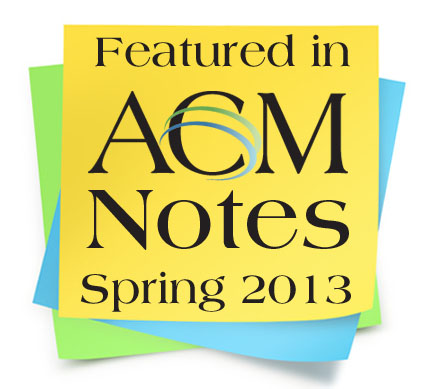Madeleine Senko, a junior at St. Olaf College, is a big fan of museums. So what did she do when she arrived in Florence last fall and heard that she could get an internship at the famous Uffizi Gallery? “Of course, I started jumping up and down with joy!” she said.
When visitors from around the world flock to the Medici Chapels, another of Florence’s best-known sites, they now have Lawrence University’s Siri Benn as one of their guides, figuratively speaking.
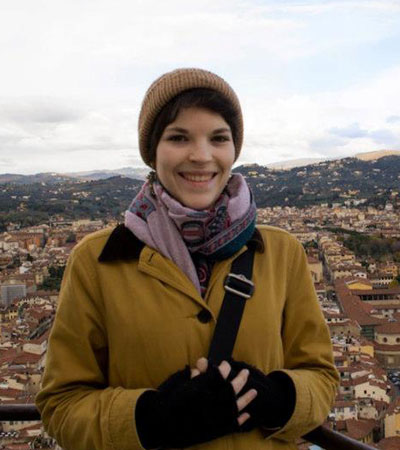 Madeleine Senko at the top of the Duomo in Florence.
Madeleine Senko at the top of the Duomo in Florence.
Photo courtesy of Madeleine Senko
Senko and Benn were the first students on the Florence Program to have internships at two of the city’s premier museums. Their experiences as interns complemented their academic work, gave a big boost to their Italian language skills, and provided insights into what they would like to do in the future.
Language is key to internships
The internships grew out of connections with museum directors forged by Florence Program Director Jodie Mariotti during her decades as an educator and scholar in Florence. Now that Benn and Senko have blazed the trail, three students currently participating in the Arts in Context program have followed, one at the Uffizi and two at the Medici Chapels. Mariotti said she is hoping to expand the opportunities to include more museums in the future.
The first hurdle for any student interested in an internship is to be able to speak Italian, with a minimum of two semesters of college-level Italian or the equivalent. Benn had taken Italian at Lawrence and Senko studied it when she was in high school. During the first month of the program, when the emphasis was on intensive Italian study at the Linguaviva language institute, they placed into advanced classes.
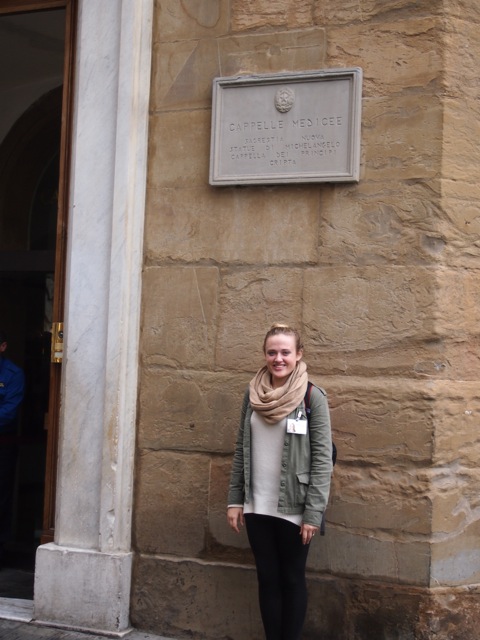 Siri Benn at the Medici Chapels.
Siri Benn at the Medici Chapels.
Photo courtesy of Siri Benn
“Both of us were in classes with a variety of students from other countries – Germany, South America, Japan,” said Benn. “That was a really great experience.” After that, the pair met weekly with a Linguaviva instructor for a more individualized lesson related to their internships.
Having to rely on their Italian in a work setting could be challenging at times, according to both students, but it also yielded great benefits. “I was able to exchange pleasantries and ask questions when I needed to about my work, and [my Italian] definitely improved,” Senko said. “We also lived with a host family, and I made a very strong effort to speak with my host mother in Italian.”
Keeping tabs on world-traveling art
For Senko, the internship at the Uffizi Gallery was an entree into the world behind the scenes of a museum with a huge collection and myriad connections around the globe. She worked in the department that makes all the arrangements when the Uffizi loans artwork to other museums and galleries.
“It was incredibly complex,” she said. “For some of the bigger exhibits the Uffizi was involved with, the packets of information were as wide as my hand could hold. They had hundreds of pieces of art and artifacts, and every one of them was inventoried and there were certain pieces of art that would be away from the Uffizi for several years. They would spend a year in one part of Japan and then move down to a museum in another part of Japan and wouldn’t come back until 2015. It was very interesting to read the paperwork.”
“Just to see the kind of people that office deals with was so cool, it was fascinating to me,” she added. “I just felt very honored that they trusted me with that information.”
Senko got to see some of the non-public areas of the museum, such as where they restored artworks and kept artifacts not currently on display, and she watched the staff of workers who specialize in packing and shipping the vast array of paintings, manuscripts, and other art that goes out on loan.
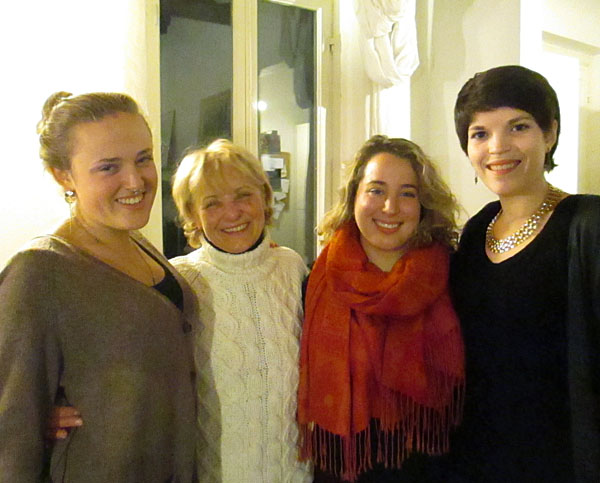 Siri Benn and Madeleine Senko with fellow student Emma Moss and their host mother, Saura Simonetti.
Siri Benn and Madeleine Senko with fellow student Emma Moss and their host mother, Saura Simonetti.
Photo courtesy of Madeleine Senko
“One of the best parts of my internship was when I had a chance to see them taking apart one of the exhibits that was there,” Senko said. “They had a big exhibit on Gothic art, and I got to see them dismantling it. In less than three days the entire exhibit was down, the pieces were packed up, and they were ready to ship off.”
Many of the Florence Program classes are held on site at museums and churches around the city, and the Uffizi is a frequent destination. Due to her internship, Senko said, “I had a different sense of appreciation when we would go in and look at the art pieces and what was on display and how they displayed it. It made everything feel just a bit more connected for me.”
Your work, now on display near Michelangelo’s
While Senko would walk into the Uffizi to find a set of tasks awaiting her that day, Benn’s internship at the Medici Chapels was organized around a pair of projects that she worked on more independently. Both projects involved the information plaques, written in both Italian and English, which explain the art and the surroundings to the Chapels’ visitors.

The first project Benn tackled was to evaluate the plaques throughout the museum and suggest improvements – such as correcting mistranslations in the text, adding additional information for the visitors, and even repositioning plaques to improve the flow of tourists through the museum.
Toward the end of the semester, a second project emerged when the museum developed a new display about “pietre dure” intarsia, the inlaid mosaic work used in the Chapels in which pieces of marble are cut and fit together very precisely to render sophisticated images. A plaque was needed to go with the display, and the museum’s director asked Benn if she would translate the Italian text into English.
“I actually did the English translations and they got the plaque published [and put on display],” Benn said, “so now the plaques that are there are my translations, which is pretty cool.”
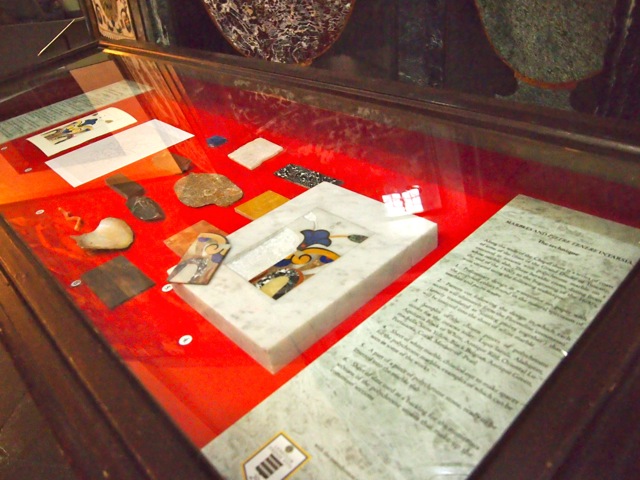 An exhibit at the Medici Chapels, with Siri Benn’s translation on the right.
An exhibit at the Medici Chapels, with Siri Benn’s translation on the right.
Photo courtesy of Siri Benn
“The translating was really good practice for my Italian,” said Benn. “It’s one thing to read it and comprehend it, but [another thing] to turn it into something that has finesse and flow and that captures what is being said. It’s not a one-to-one translation, where this word automatically means [that] word. It made me appreciate how much work goes into translation, which I really liked.”
Being at the Medici Chapels dovetailed with courses Benn was taking on the program, especially one focused on the work of Michelangelo, who designed the New Sacristy – which is part of the Medici Chapels – and created sculptures for it. The reading and research she did in preparing the plaques provided a lot of information that she used in her final paper for the course.
“I was very interested in Michelangelo and basically how he was conscripted by his patrons and was kind of at the whims of his patrons all of his life,” Benn said. “The Medici Chapel is a prime example of that, where his arm was kind of twisted by the Medici to get this project done.”
New directions and options to consider
Senko and Benn have continued to feel the effects of their internship experiences since returning to their home campuses.
Back at St. Olaf, Senko has switched one of her majors. “The entire experience of being in Florence and studying art history has convinced me to be an art history major,” she said. “I was previously studio art and political science, and I realized that art history is more the direction I want to go.”
For Benn, a junior majoring in art history, the experience shifted her thoughts to some new possibilities. “I’m considering grad school, but [the internship] made me think more about museum studies,” said Benn. “What goes into making this information [on the plaques] – which could potentially be incredibly detailed and complicated and full of jargon – accessible to a group of people that’s probably interested but has no background in it? I’m still trying to pull together my thoughts, but it makes me consider more options.”
Links:
- Florence: Arts, Humanities, & Culture
- London & Florence: Arts in Context
- Information about applying for an internship in the Florence Program




